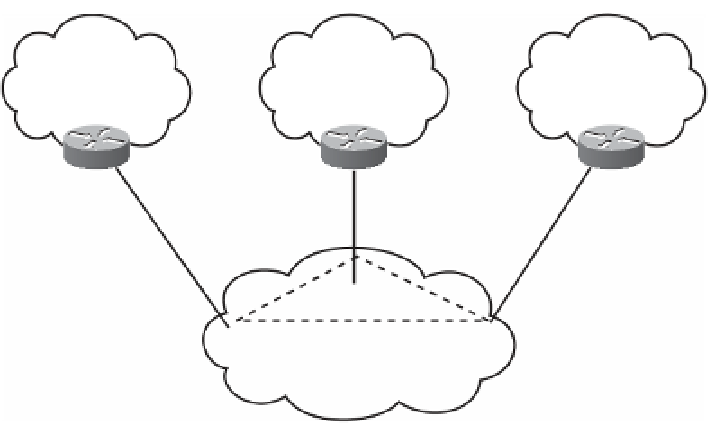Information Technology Reference
In-Depth Information
Before two BGP routers can exchange routing updates, they must become established
neighbors. After BGP routers establish a TCP connection, exchange information, and ac-
cept the information, they become established neighbors and start exchanging routing up-
dates. If the neighbors do not reach an established state, they do not exchange BGP
updates. The information exchanged before the neighbors are established includes the
BGP version number, ASN, BGP router ID, and BGP capabilities.
eBGP
External Border Gateway Protocol
is the term used to describe BGP peering between
neighbors in different autonomous systems. As required by RFC 1771, the eBGP peers
share a common subnet (although Cisco does allow some flexibility to avoid doing so). In
Figure 11-9, all routers speak eBGP with routers in other autonomous systems. Within au-
tonomous system 500, the routers communicate using iBGP, which is covered next.
Key
To p i c
AS 100
AS 200
AS 300
EBGP
EBGP
EBGP
IBGP
AS 500
Figure 11-9
eBGP Used Between Autonomous Systems
iBGP
Internal Border Gateway Protocol
is the term used to describe the peering between BGP
neighbors in the same autonomous system. iBGP is used primarily in transit autonomous
systems. Transit autonomous systems forward traffic from one external autonomous sys-
tem to another external autonomous system. If transit autonomous systems did not use
iBGP, the eBGP-learned routes would have to be redistributed into an IGP and then redis-
tributed into the BGP process in another eBGP router. Normally, the number of eBGP
routes is too large for an IGP to handle.
Key
To p i c
iBGP provides a better way to control the routes within the transit autonomous system.
With iBGP, the external route information (attributes) is forwarded. The various IGPs
system paths, between eBGP routers.






